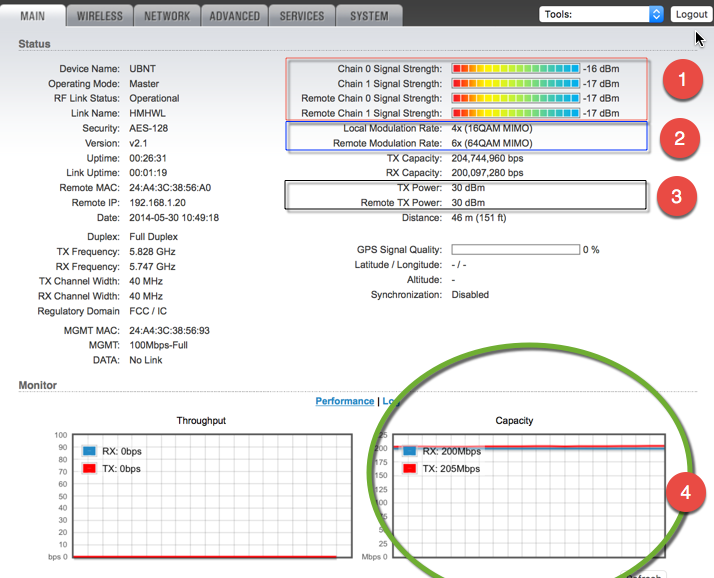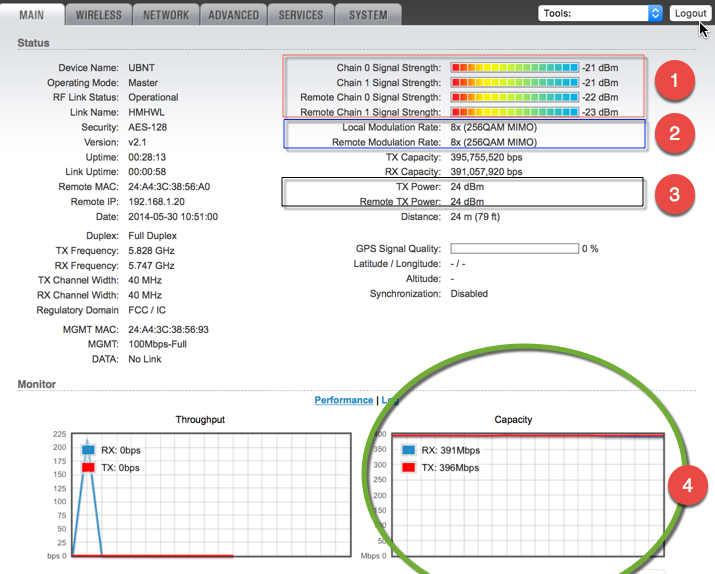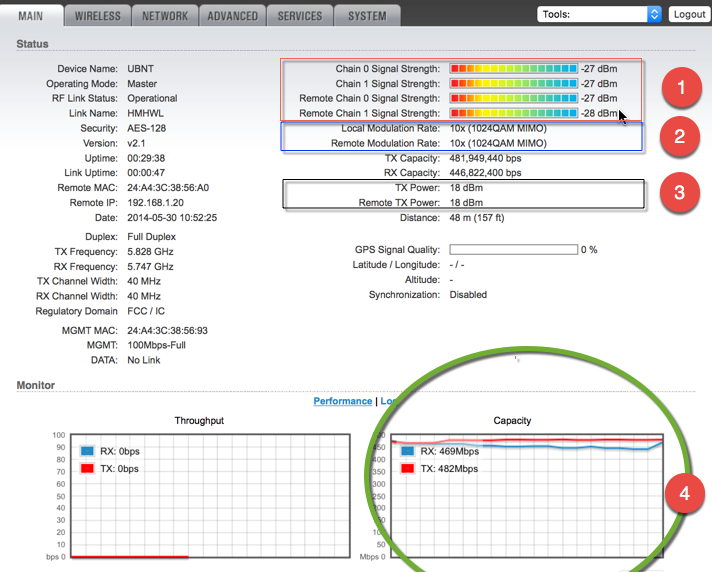More Power More Problems! When Excessive RF Power Degrades your WiFi Performance!
 Monday, October 12, 2015 at 10:48PM
Monday, October 12, 2015 at 10:48PM In the wireless world we often think more power is good. The louder the signal surely higher the performance gain. I’m sorry to say that’s not true in most cases. RF power is like a delicate flower and should be treated with respect. Simply choosing a higher power output and not properly tuning your radios could cause you more pain than you really know. In this quick blog post, I share a pair of static bridges being bench tested 70 feet apart. The only difference in configuration is simply changing the RF power. While I only share the capacity values, the throughput values have been excluded to keep the focus on power.
Example #1 - (HOTTEST)
In this example we pump up the power @ 30 dBm.
(1) Link @ -17 dBm
(2) Modulation at 16 / 64 QAM
(3) TX Power 30 dBm
(4) Capacity Link TX 205, RX 200

Example #2 - (HOT)
In this example we power down to @ 24 dBm.
(1) Link @ -22 dBm
(2) Modulation at 256 / 256 QAM
(3) TX Power 24 dBm
(4) Capacity Link TX 396, RX 391

Example #3 - (PEACHY)
In this example we power down to @ 18 dBm.
(1) Link @ -27 dBm
(2) Modulation at 1024 / 1024 QAM
(3) TX Power 18 dBm
(4) Capacity Link TX 482, RX 469

Modulate Gain: 16 vs 1024 and 64 vs 1024
Capacity Link Gain: TX 205 vs 481, RX 200 vs 469
Why excessive power gain is bad is because it increases noise and distortion at the receivers radio. In Example #1, both radios can hear each other at -17 dBm! Think of it this way, imagine having someone in your ear with a megaphone yelling today’s lunch specials at you. You can’t hear so well, can you ? Take away the megaphone and step back a few feet and all is peachy.
My quick less-techy blog post for today!
Cheers!















Reader Comments